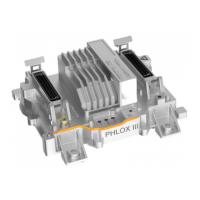1.) Organisation of electrical bus line:
The CAN-H, CAN-L and shield (CAN-GND) must be looped through from node to node.
CAN bus line must be organised according to line-structure (node-1, node-2 … node-N).,
see picture.
2.) Termination of twisted pair in bus line:
connect between CAN-H and CAN-L one resistor 120Ω on the begin of bus line
and one resistor 120Ω on the end of bus line.
3.) Conditions by each node (CAN-Port by ECU) on the bus line:
- shield must be connected to terminal “CAN-GND”,
signal lines CAN-H and CAN-L to signal terminals (the names are the same).
- By removing of one node-device the CAN-communication between other nodes
must work without interrupt (requirements acc. ISO 11898-2:2003).
- DC-decoupling between CAN-port (CAN-GND, -H, -L) and PE (frame) is required.
4.) Type of bus line isolation and the application fields:
There are generally two different types of bus lines: - isolated and non isolated.
If one or more nodes on the line don’t have galvanic isolation – this bus is called non isolated.
Generally:
- use isolated bus line for communication with external customer modules.
- for communication, localised internally in one control cabinet only,
it is allowed to use a non isolated bus line.
5.) Connection to PE by isolated bus line (see point-4):
the shield of can-bus must be connected to PE (mounting plate) in one point only.
If required, use a CAN-repeater for isolation.
Consider time delay for signal conversion by CAN-repeaters and
limit the cable length or reduce the data transmission baud rate

